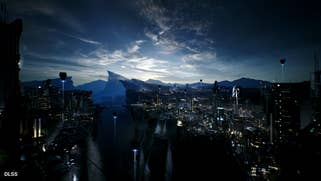Nvidia GeForce RTX 2070 - the Digital Foundry verdict
Ray tracing is a big unknown, but DLSS could be the RTX 2070's game-changer.
To a certain extent, purchasing any Turing card in there and now is a leap into the unknown - there are simply so many high-end features in the new architecture and we have no idea of how effective they will be, or what kind of take-up they will get from developers. Take ray tracing, for example. Everything we've seen so far demo-wise has been tailored for the high-end RTX 2080 Ti, but Nvidia's own numbers suggest that the RTX 2070 only has only 60 per cent of the ray tracing performance of the flagship card. Inevitably, this must mean something for performance on this mid-range offering - a reduction of some kind. In the RTX 2080 Ti review phase, we had some idea of how ray tracing may operate on the high-end card - we'd seen pre-production software and we'd gone hands-on - but RTX 2070 is a complete unknown.
On the other hand, we do have some numbers for DLSS, even if we lack actual games, and the outlook there is encouraging. The benchmarks for the DLSS demos prove that the reduced core count in the RTX 2070 seems to have no impact on the performance uplift the technology delivers - we're still getting an extra 35 per cent in frame-rate compared to TAA, with only a small hit to visual quality. Support for DLSS also looks robust and the potential impact here is extraordinary: the demos suggest that the RTX 2070 could deliver a boost of anything up to 20 to 30 per cent over the GTX 1080 Ti in supported titles. I've included some image quality comparisons on this page so you can get an idea of how well DLSS compares - it'll vary from game to game but in my opinion, the quality is there.
In terms of 'here and now' performance, RTX 2070's credentials aren't as impactful. It's a product that typically matches or exceeds GTX 1080 frame-rates, but not by any game-changing degree - so in that respect, it's very much like RTX 2080, which offers performance along the same lines as the GTX 1080 Ti. Given price parity with the 1080, or something pretty close to it, I'd have to give the nod to the RTX 2070 - having ray tracing compatibility onboard is clearly a preferable option than having none at all, while the wealth of new features in the Turing architecture will surely be picked up to a certain degree in the medium to longer term future.


















There's also the trend for improved performance in more forward-looking engines, something we've seen in all of the RTX products so far, plus the inevitable move towards driver optimisations being targeted towards the newer cards. Given broadly equivalent pricing, it simply makes sense to invest in the more modern technology. But with that said, the pricing situation does mean you need to be careful about which RTX 2070 you choose - a reference-clocked card at £469/$499 is more competitive price-wise against the GTX 1080, while the more deluxe cards like the RTX 2070 Gaming-Z 8G we have here veer a touch too close to GTX 1080 Ti prices. But at least cards at the base price are actually available, and by all accounts, there are some good models out there.
I began this review by talking about the xx70 products and the remarkable offerings we've had over the last couple of generations. The GTX 970 defined a set performance level for 1080p60 gaming that persists pretty much to this day, while at the same time defining the standard for mention entry-level VR. Not only that but via overclocking, it could exceed GTX 980 stock performance, while comprehensively beating the prior-gen GTX 780 Ti flagship. For the price asked of it, it was simply amazing. GTX 1070 wasn't quite as seismic, but took decent 1440p performance into the mainstream - and it was literally years before AMD could match what it offered.
RTX 2070 clearly doesn't have the same kind of initial impact as its immediate predecessors, but of all the Turing technologies, it's the impact of DLSS that could be the most profound for this product, turning excellent 1440p performance into a 4K experience that's significantly faster than GTX 1080 Ti. That's the kind of flagship-beating legacy we'd hope for from a xx70 card - and we'll be tracking this technology closely as supported titles appear.
Nvidia GeForce RTX 2070 Analysis
- Introduction, Hardware Breakdown
- DLSS - Deep Learning Super-Sampling: Performance Analysis
- Assassin's Creed Unity, Battlefield 1, Crysis 3, Far Cry Primal - Rasterisation Analysis Part 1
- Ghost Recon Wildlands, Rise of the Tomb Raider, Shadow of the Tomb Raider, The Witcher 3, Wolfenstein 2 - Rasterisation Analysis Part 2
- Which version to buy? Reference clocks vs Founders Edition vs Gaming-Z
- GeForce RTX 2070 - the Digital Foundry verdict [This Page]
